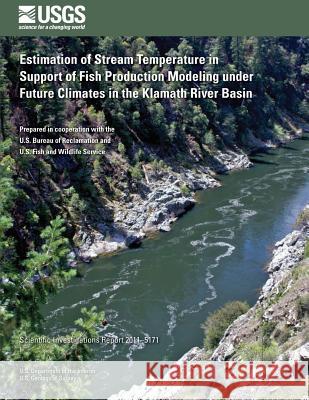Estimation of Stream Temperature in Support of Fish Production Modeling under Future Climates in the Klamath River Basin » książka
Estimation of Stream Temperature in Support of Fish Production Modeling under Future Climates in the Klamath River Basin
ISBN-13: 9781500485924 / Angielski / Miękka / 2014 / 38 str.
Estimation of Stream Temperature in Support of Fish Production Modeling under Future Climates in the Klamath River Basin
ISBN-13: 9781500485924 / Angielski / Miękka / 2014 / 38 str.
(netto: 68,76 VAT: 5%)
Najniższa cena z 30 dni: 71,60
ok. 16-18 dni roboczych.
Darmowa dostawa!
Stream temperature estimates under future climatic - ing for evaluation of effects of dam removal in the Klamath River Basin. To allow for the persistence of the Klamath River 2012 will review potential changes in water quality and stream temperature to assess alternative scenarios, including damusing a regression model approach with simulated net solar temperature, and mean daily air temperature. Models were calibrated for 6 streams in the Lower, and 18 streams in the Upper, Klamath Basin by using measured stream temperatures for 1999-2008. The standard error of the y-estimate for the estimation of stream temperature for the 24 streams ranged from 0.36 to 1.64 degrees Celsius ( C), with an average error of 1.12 C for all streams. The regression models were then used with projected air temperatures to estimate future stream temperatures for 2010-99. Although the mean change from the baseline historical period of 1950-99 to the projected future period of 2070-99 is only 1.2 C, it ranges from 3.4 C for the Shasta River to no change for Fall Creek and Trout Creek. Variability is also evident in the future with a mean change in temperature for all streams from the baseline period to the projected period of 2070-99 of only 1 C, while the range in stream temperature change is from 0 to 2.1 C. The baseline period, 1950-99, to which the air temperature projections were corrected, established the starting point for the projected changes in air temperature. The average measured daily air temperature for the calibration period 1999-2008, however, was found to be as much as 2.3 C higher than baseline for some rivers, indicating that warming conditions have already occurred in many areas of the Klamath River Basin, and that the stream temperature projections for the 21st century could be underestimating the actual change."
Zawartość książki może nie spełniać oczekiwań – reklamacje nie obejmują treści, która mogła nie być redakcyjnie ani merytorycznie opracowana.











